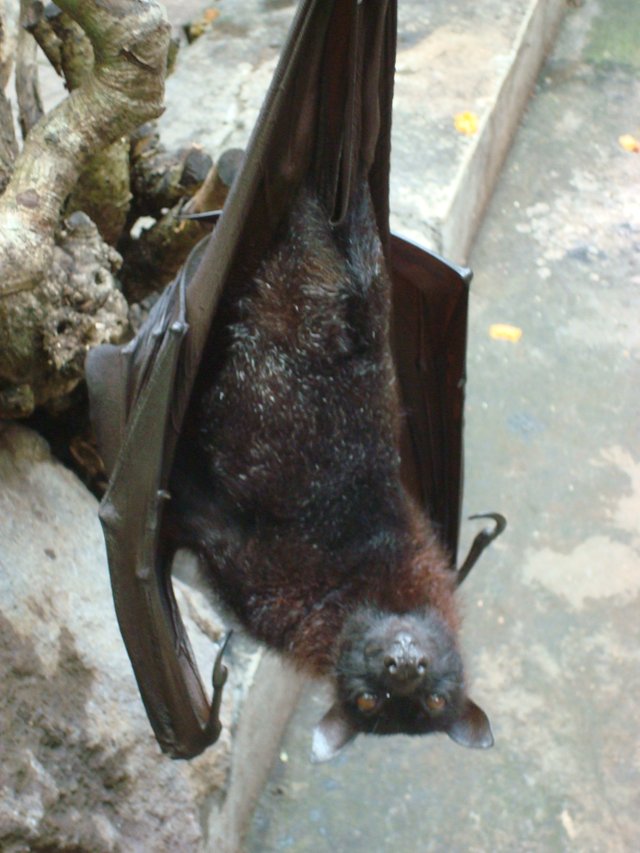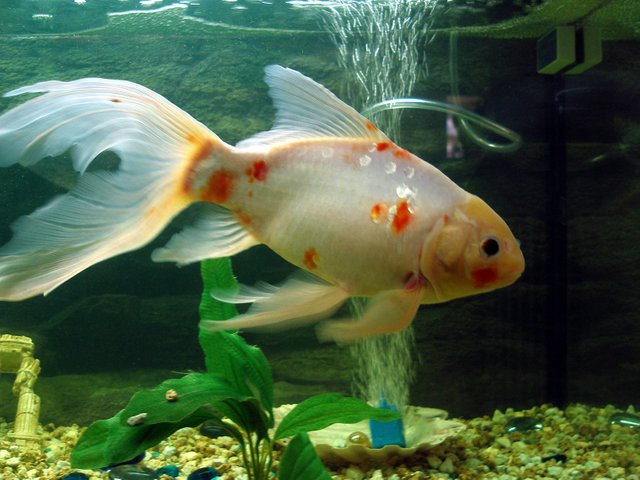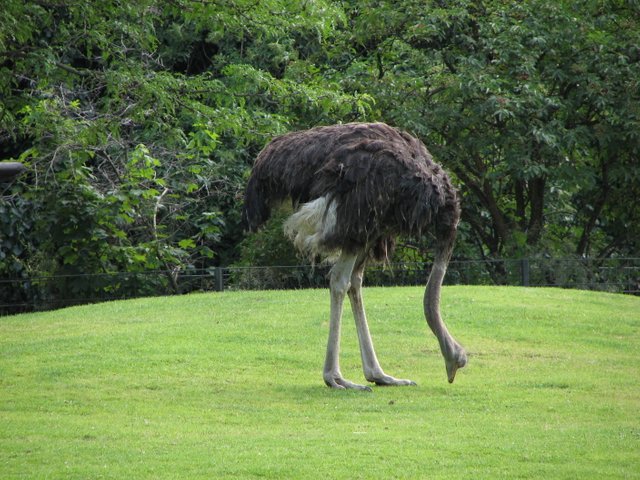10 popular animal “facts” that are plain wrong (Part 1 of 2)
There are lots of misconceptions and myths about animals, as well as “funfacts” that are just wrong. To fix this problem, I am going to tell you about some of the most popular false animal facts, and teach you what is actually true. In these posts I will cover ten of the most popular misconceptions, starting with the first 5 right now. Part 2 is coming along tomorrow, so make sure to follow me to get it in your Steemit feed.
Bats are not blind
Not a single bat species is completely blind. It is true that the small species (usually called microbats) have very poor sight, but they still regularly use to it navigate. They always use their sight to navigate over longer distances, because the echolocation has a relatively short distance.
Some bat species even use the sight for hunting, and combined with their good hearing and smelling ability, this might be more useful for hunting prey than the echolocation itself.
The megabats are believed to have better eyesight than humans, so the myth that bats are blind is completely false. See the Wikipedia entry of Bat’s other senses for more information.
Generally speaking, natural selection tends to remove any organs that are not used. This is is order to conserve energy by not producing anything that is not needed, so if the bats were blind, they would probably not even have eyes.

In this picture, you can even tell that the bat is using its vision to look at the camera. Also look at the size of them. It would just not make any sense to have such large eyes if they were blind. Image by Arabsalam, posted with the Creative Commons Attribution-Share Alike 4.0 International license.
Bulls are not enraged by the color red
A lot of people believe that bulls get angry when they see the color red, but this is simply not true. This myth probably has a lot to do with the use of the color red in bullfighting, such as having the costumes or the taunting cloth dyed red.
Actually, the bulls are color blind to the color red, so they will not even be able to tell that the red color is used by the matadors. What makes them charge at the matadors are the motions, which are used to taunt the bull and make it charge. It would not matter which color the matador has on his clothes, or which color is used on the cloth they use for taunting.
So, why are the matadors and bullfighters covered in red or using a red cloth to enrage the bull? It is all part of the performance, and has nothing to do with the animal they are tormenting. Some claim it simply has to do with traditions, while others think it is meant symbolically because red is the color of blood.
Here we can see a bullfighter use a red cloth to try to enrage the bull. Image by AlejandroLinaresGarcia, posted with the GNU Free Documentation License.
Goldfish have way more than a two second memory
A lot of people are under the impression that goldfish (Carassius auratus) will forget stuff after just a few seconds, just like Dory from the Finding Nemo movies. However, goldfish tend to have pretty good cognitive abilities, and has been suggested to have a memory span of about three months. That is a few million times longer than people think.
In addition to have a decent memory span, they also have the ability to learn tricks, recognize their keepers, or even know the difference between colors. With some persistence you can train your goldfish to not shy away when feeding it, and possibly eating from your fingertips.
You can check out the Cognivite Abilities of Goldfish on Wikipedia to learn more about their intelligence.

This goldfish is probably a bit more intelligent than the owners might think. Image by Duchess, posted with the GNU Free Documentation License.
Ostriches does not stick their head into the sand
Ostriches (Struthio camelus) certainly do not stick their heads in the sand do “hide” from predators. This misconception seems to date back to over 2,000 years ago, when Pliny the Elder, a Roman philosopher wrote that “imagine, when they have thrust their head and neck into a bush, that the whole of their body is concealed”. This has no basis in reality.
Some speculate that this behavior was misunderstood for when the ostriches searched the sand for pebbles. Another theory for this misconception is that people mistook them for burying their heads in the sand when they are laying low to hide from predators. At a distance, this may sometimes look like they have their head in the sand.
Instead of burying the heads in the sand, the usually outrun the predators, and are killed if they managed to be ambushed by them. The only exception is the cheetah, which is able to outrun it, and can capture ostriches with some effort.

No, it is not trying to bury its head. Image by Adamantios, posted with the GNU Free Documentation License.
Dogs are not colorblind
Many people think the dogs are colorblind, but that is not the full truth. This fact is not straight up wrong, but it is not right either. Dogs do indeed see fewer colors than humans, and this is because they only have two cone cells, while most humans have three. These are responsible for distinguishing colors, and more cone cells means the user can observe a bigger part of the color spectrum. If a human only has two cone cells, he is considered colorblind. Having all three cone cells allows us to see more wavelengths in the color spectrum than dogs do, but there are lots of animals that have more cone cells than we do, which means they are able to distinguish many more colors than us.
So, what is the color vision of a dog like? We think that dogs perceive red to be dark brown, while green, orange and yellow all look yellowish to the dog. So they certainly have fewer colors than we do, but they also definitely do not only have black and white vision like a lot of people seem to think.
In order to be eligible to have color blindness, you would need to perceive fewer colors than expected by your species, so dogs with two cone cells does not meet the criteria to be colorblind.
They also have a reflective membrane behind their retina, which will allow them to catch dim light that enters the eye. This gives them a lot better sight at nighttime when it is dark, so its not like their vision is worse than ours, they just see fewer colors.
Thanks for reading
Thank you for reading the first part of the 10 popular "funfacts" about animals that are wrong. I am going to publish part 2 tomorrow, so check back later for more information.
I hope you enjoyed the post, and do not be afraid to leave a comment below.
About the author
Hi, I’m @valth! I live in Norway with my pregnant girlfriend and our two dogs, one of which is seen wearing a bowtie in the profile picture!
I am very passionate about nature and biology, and have been studying ecology for a few years now. My passions are mostly within conservation biology, mycology (the studies of mushrooms), animal behavior and general microbiology. I really enjoy both the theoretical aspect, as well as the more practical aspect of biology, and I spend about as much time in front of biology textbooks as I do spend on finding and identifying plant, mushroom and animal species in the forests.
Make sure to hit the big follow button above to get my posts right in your feed! I get really happy when I see my follower number increase ;)

I never believed or understood where the idea of the goldfish one came from, anyway pretty cool article upvoted.
Me neither. It does not look there there is even a good source for the origin of the myth, so I'm betting it is pretty old.
Thanks for the upvote! :)
As always another great read from you.
Thanks! I'm happy to hear that you enjoyed it :)